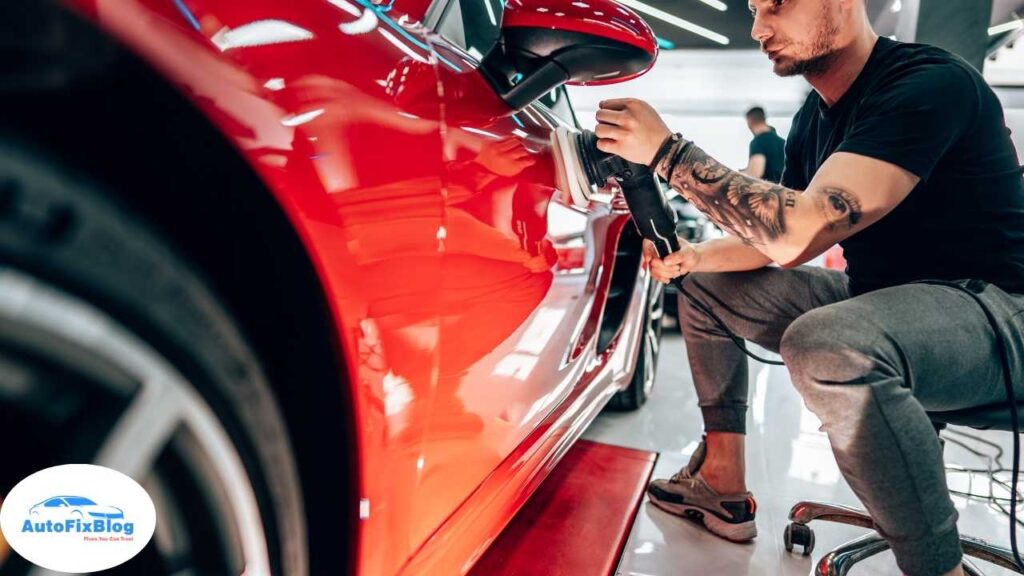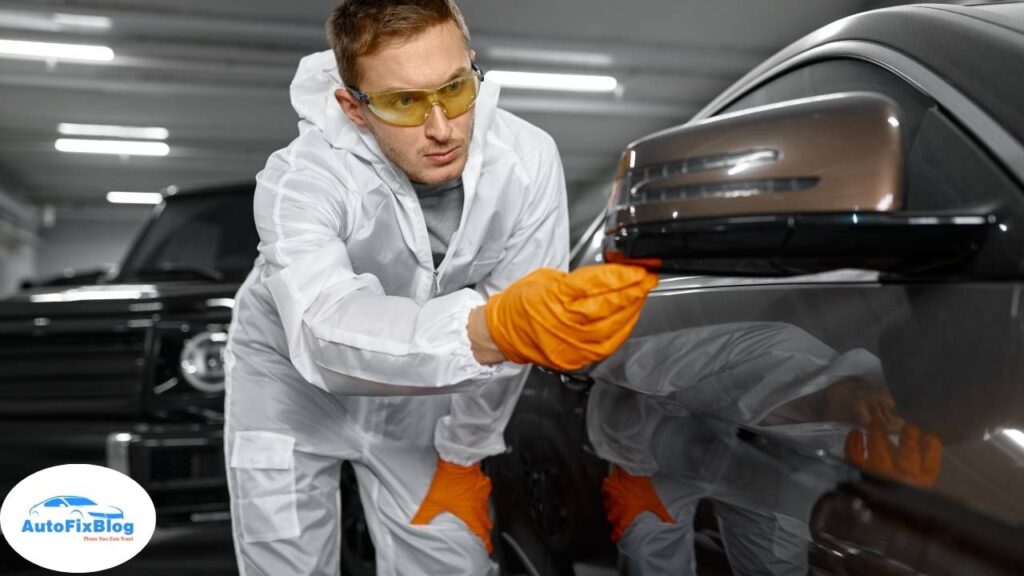Whether you’re dealing with accidental paint splatter, a botched DIY job, or simply want to strip your vehicle down to its original finish, knowing how to remove paint from a car is essential.
The process requires care, precision, and the right tools to ensure you don’t damage the underlying surface or create other auto problems. This guide will walk you through the steps of removing paint safely, helping you avoid pitfalls like paint blisters or scratches on the car’s surface.
Why You May Need to Remove Paint from a Car
There are several reasons why you might need to remove paint from your car. Some of the most common include:
- Accidental overspray: If your car was parked near a construction site or painting job, it may have been hit with overspray.
- Peeling or damaged paint: Over time, paint can fade, peel, or bubble, leaving your car looking less than perfect. Removing the damaged paint and starting fresh may be the best option.
- Restoration projects: If you’re restoring an older vehicle, you may want to strip away the old paint to apply a new, smooth coat.
- Removing dealer stickers: Sometimes, removing dealer stickers can leave a mess that involves paint removal, especially if done improperly.
No matter the reason, learning how to remove paint from a car can save you time and money on costly professional services.
Tools and Materials You’ll Need
Before you begin the process of removing paint from your car, it’s essential to gather the right tools and materials:
- Plastic scraper or razor blade: For peeling off large sections of paint.
- Paint stripper or chemical solvent: Designed to break down car paint.
- Fine-grit sandpaper: To sand down and smooth out the paint surface.
- Microfiber cloth: For wiping away residue and cleaning the surface.
- Protective gloves and eyewear: To protect yourself when using chemicals.
- Soap and water: For cleaning the car surface before and after paint removal.
- Polish or wax: To restore the car’s shine after the paint is removed.

Step-by-Step Guide: How to Remove Paint from Car
1. Prepare the Car Surface
Before you begin the paint removal process, it’s essential to prepare the car’s surface. Wash the car thoroughly with soap and water, paying special attention to the areas where you’ll be removing paint. This ensures that dirt, grime, and debris won’t interfere with the process or scratch the underlying surface.
For example, if you’re dealing with removing dealer stickers, ensure the surrounding area is clean so you don’t drag dirt across the surface while peeling off the sticker or paint.
2. Assess the Type of Paint Damage
The next step in learning how to remove paint from a car is assessing the type of paint damage you’re dealing with. Is it small splatters of paint, large peeling sections, or a complete paint job that needs to be stripped away? This will help determine the best approach for paint removal.
- Small splatters: These can often be removed with mild solvents or a plastic scraper.
- Large areas of peeling or damaged paint: For larger sections, you may need to use chemical paint strippers or sandpaper to remove the old paint.
Make sure you know the type of paint you’re working with (water-based, oil-based, etc.), as some removal methods work better for specific types of paint.
3. Apply Heat (Optional)
If you’re dealing with paint blisters or peeling paint, applying heat can help loosen the paint and make it easier to remove. Use a heat gun on a low setting or a hairdryer to warm the paint, making it softer and more malleable.
- Hold the heat source a few inches away from the paint, moving it in a circular motion to prevent overheating the area.
- Avoid using too much heat, as it can damage the underlying surface and create more auto problems than you started with.
4. Use a Paint Stripper or Solvent
Chemical paint strippers are highly effective for larger areas where you need to remove significant amounts of paint. When choosing a paint stripper, make sure it’s designed specifically for automotive use.
- Apply the stripper: Wearing protective gloves and eyewear, apply the chemical stripper to the affected area. Follow the manufacturer’s instructions regarding the amount of product to use and the time required for the stripper to break down the paint.
- Let it sit: Most strippers need to sit for about 15-20 minutes to soften the paint fully.
- Scrape off the paint: Once the paint has softened, use a plastic scraper or razor blade to gently peel away the paint. Avoid using metal tools, as they can scratch the surface.
5. Sand Down the Surface
Once you’ve removed the majority of the paint, the next step in how to remove paint from a car is sanding the surface. Use fine-grit sandpaper to smooth out any remaining patches of paint and prepare the surface for a new coat, if necessary.
Sand in circular motions, applying light pressure to avoid damaging the car’s surface.
After sanding, wipe the area with a microfiber cloth to remove dust and debris.
6. Clean the Surface
After you’ve finished removing the paint, it’s important to clean the surface thoroughly to remove any residue left behind by the paint stripper or sandpaper. Use soap and water to clean the area, then dry it with a clean microfiber cloth.
For areas like the windows, you may need to focus on cleaning the car window to ensure no paint residue or streaks are left behind.
7. Polish and Wax the Car
After completing the paint removal process, your car’s surface may look dull or uneven. This is normal, and polishing or waxing can restore the car’s finish. Apply a car-safe polish to the treated area, followed by a coat of wax for added protection.
Waxing the car not only improves the appearance but also creates a protective barrier that prevents future damage to the exposed surface.
Avoid Common Mistakes in Paint Removal
When learning how to remove paint from a car, there are several common mistakes that can result in damage to your vehicle. Here are some things to avoid:
- Using too much heat: Overheating the paint can lead to paint blisters and further damage. Always apply heat gradually and from a safe distance.
- Using metal tools: Metal scrapers or blades can scratch the surface of your car. Stick to plastic scrapers or use your hands when possible.
- Skipping the cleaning step: Failing to clean the area properly before and after paint removal can result in scratches or streaks.
Fixing Auto Problems After Paint Removal
Sometimes, removing paint can reveal other issues with the car’s surface, such as rust spots, dents, or chips. If you notice any fixing auto problems like these, it’s important to address them right away. You can apply touch-up paint to small scratches or use a professional repair service for more significant issues.
Knowing how to remove paint from a car is a useful skill for car owners, especially when dealing with accidental splatters, peeling paint, or restoration projects. By following the steps in this guide, you can remove paint safely and effectively while avoiding auto problems like scratches, paint blisters, or damaged surfaces.
Taking your time, using the right tools, and cleaning the area thoroughly will help ensure a smooth, polished finish that leaves your car looking as good as new. Whether you’re removing dealer stickers or stripping the entire surface for a new coat, these methods will keep your vehicle in top condition.



